Kontakt
- Konstepidemin
- Konstepidemins väg 6
- 413 14 Göteborg
- Sweden
- Hitta hit
- T: 031-82 90 90
- E: info@konstepidemin.se
Visibility is a Trap
— Sonja Nilsson
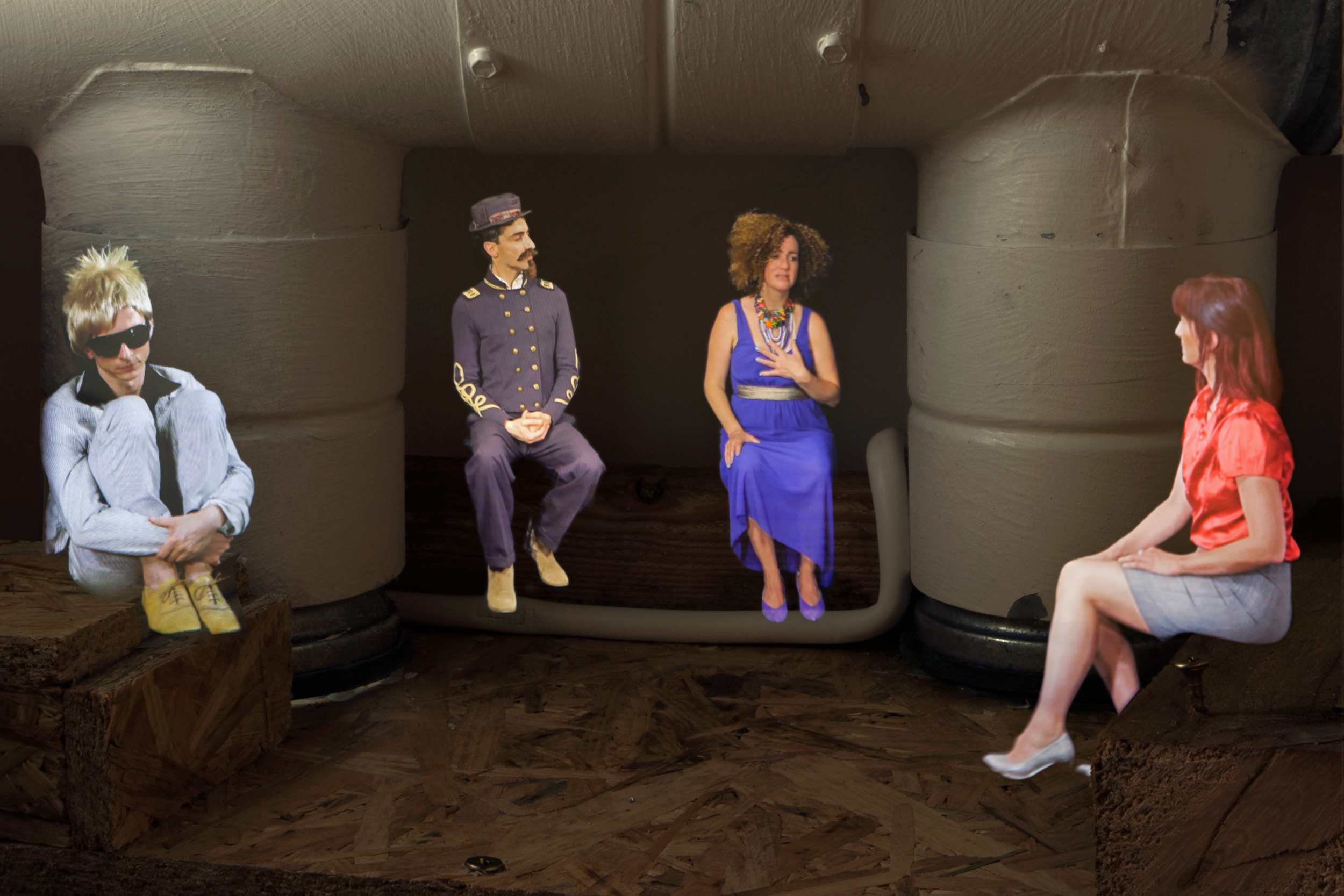
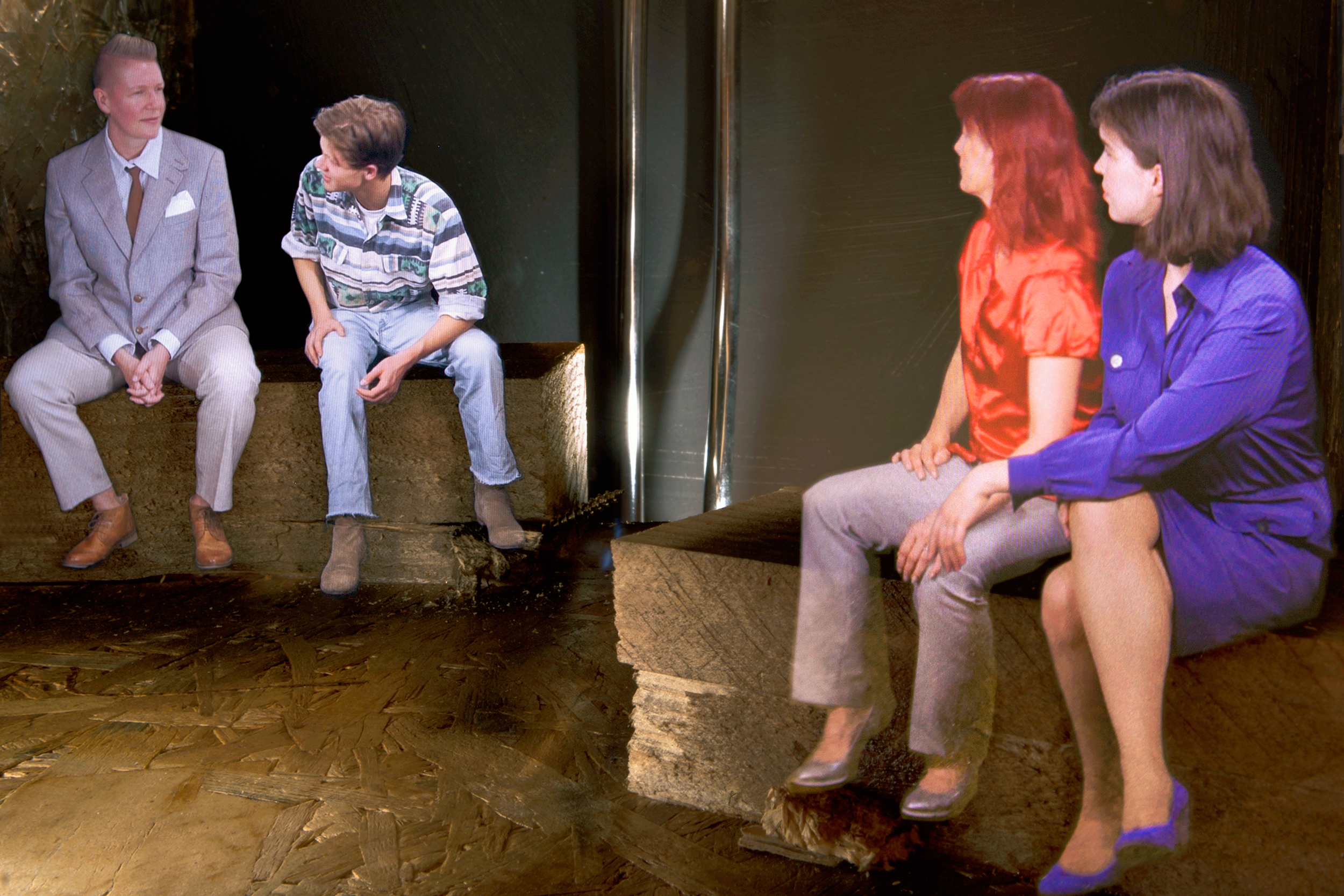
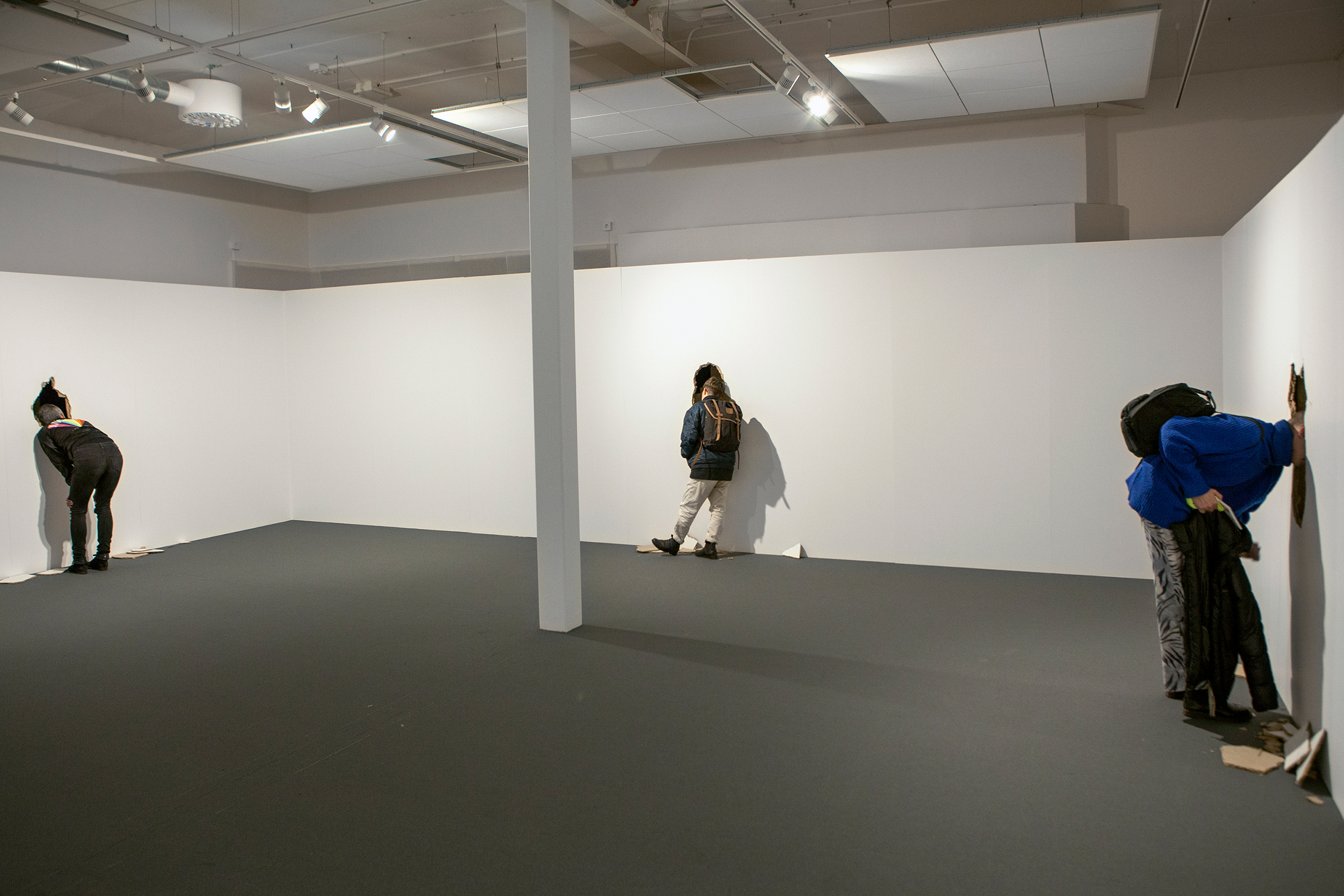
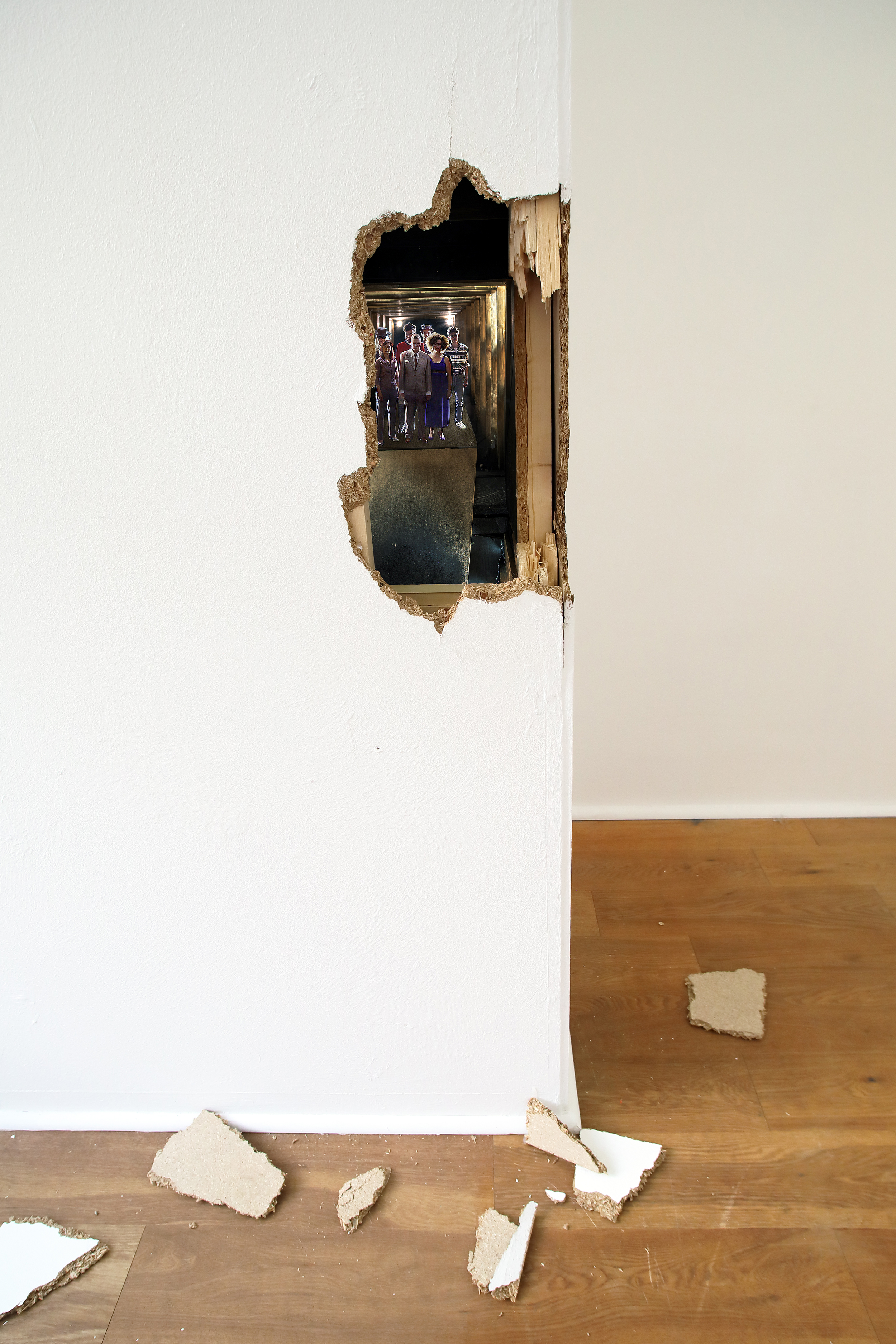
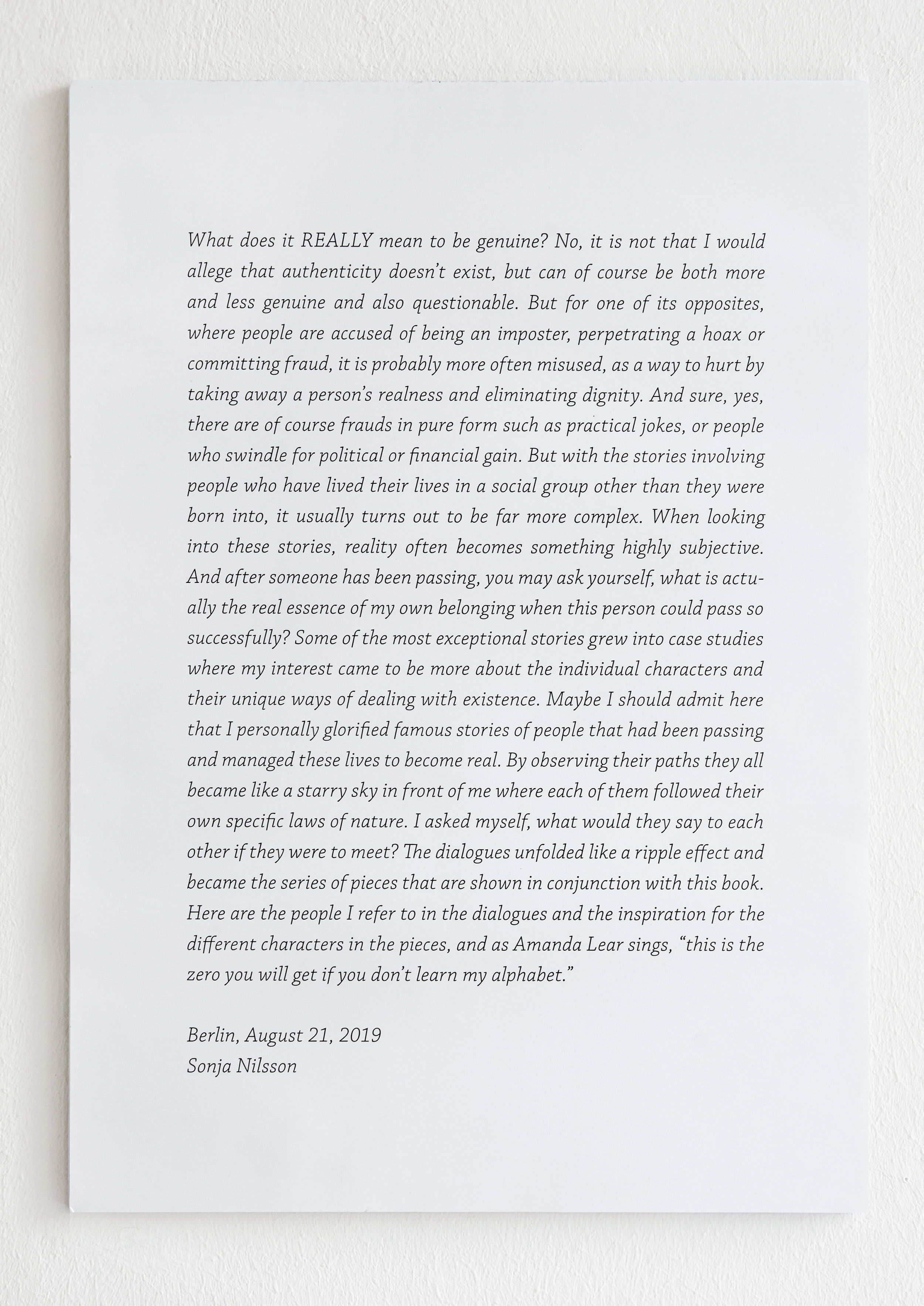
Sonja Nilsson’s exhibition ”Visibility is a Trap” consists of a series of works that revolve around the sociological concept of passing; the ability of a person to be perceived as a member of an identity group that differs from that of their origin. In these works, a number of characters meet and end up in conversations, discussions, quarrels and even a jam session. The characters in the scenes are based on cases with famous people which all relate to the theme.
Introductory text from Visibility is a Trap – the Source Book, which is part of the series of works in Sonja Nilsson’s exhibition:
What does it REALLY mean to be genuine? No, it is not that I would allege that authenticity doesn’t exist, but can of course be both more and less genuine and also questionable. But for one of its opposites, where people are accused of being an imposter, perpetrating a hoax or committing fraud, it is probably more often misused, as a way to hurt by taking away a person’s realness and eliminating dignity. And sure, yes, there are of course frauds in pure form such as practical jokes, or people who swindle for political or financial gain. But with the stories involving people who have lived their lives in a social group other than they were born into, it usually turns out to be far more complex. When looking into these stories, reality often becomes something highly subjective. And after someone has been passing, you may ask yourself, what is actually the real essence of my own belonging when this person could pass so successfully? Some of the most exceptional stories grew into case studies where my interest came to be more about the individual characters and their unique ways of dealing with existence. Maybe I should admit here that I personally glorified famous stories of people that had been passing and managed these lives to become real. By observing their paths they all became like a starry sky in front of me where each of them followed their own specific laws of nature. I asked myself, what would they say to each other if they were to meet? The dialogues unfolded like a ripple effect and became the series of pieces that are shown in conjunction with this book. Here are the people I refer to in the dialogues and the inspiration for the different characters in the pieces, and as Amanda Lear sings, “this is the zero you will get if you don’t learn my alphabet.”
– Sonja Nilsson, Berlin, Augusti 21st 2019
Sonja Nilsson (1977) took her MFA 2001 at Valand Art Academy in Gothenburg. She lives in Berlin and Ljusdal. Characteristic of Nilsson’s work are her illusionist media trickery, making projections of actors appear as holograms. As viewers, we are often confronted actively, and in a literal way, physically in relation to her works. Her work is often built on stories from pop culture with famous people. Since 2006, the ”Corridor”, a 150 sqm art piece, has been permanently installed in Verket in Avesta. In 2013, she filled Färgfabriken’s big hall with a video installation telling the sequence of events over the course of an evening that ended in a violent crime, based on a famous anecdote with a Swedish folk singer. Since 2019, her series of works ”Visibility is a Trap” has been shown in Jönköping, Norrtälje, Brussels, Berlin, Cologne and Gothenburg.
Sonja Nilssons utställning ”Visibility is a Trap” består av en serie verk som kretsar kring sociologins begrepp ”passing”, som står för förmågan hos en person att uppfattas som en medlem av en identitetsgrupp annan än sitt ursprung. I verken möts ett antal karaktärer och hamnar i samtal, diskussioner, gräl och även i en jam session. Personerna i scenerna är baserade på fall med kända personer som alla relaterar till temat.
Inledande text från ”Visibility is a Trap – the Source Book”, som är en del av serien verk i Sonja Nilssons utställning:
Vad betyder det VERKLIGEN att vara genuin? Nej, det är inte så att jag skulle påstå att autenticitet inte existerar, men kan så klart både vara mer och mindre genuin och också tvivelaktig. Men med en av dess motsatser, där personer anklagas för att vara lurendrejare, genomföra en bluff eller begå bedrägeri, är det förmodligen mer ofta missanvänt, som ett sätt att skada genom att ta bort en persons realitet och eliminera värdighet. Och visst, ja, där är så klart bluffar i sin rena form som att gå på blåsningen, eller folk som svindlar för politisk eller ekonomisk vinst. Men med berättelserna som involverar personer som har levt sina liv i en annan social grupp än de föddes in i, visar det sig oftast vara väldigt mycket mer komplext. När man betraktar dessa berättelser blir verklighet ofta något ytterst subjektivt. Och efter att någon har passerat, kan du fråga dig själv, vad är egentligen den faktiska essensen av min egen tillhörighet när denna person kunde passera så framgångsrikt? Några av de mest exceptionella berättelserna växte in till fallstudier där mitt intresse kom mer att handla om de enskilda karaktärerna och deras unika sätt att handskas med existensen. Kanske ska jag erkänna här att jag personligen glorifierat kända historier om personer som har passerat och lyckats med att få dessa liv att bli verkliga. Genom att iaktta deras banor blev de alla som en stjärnhimmel framför mig där var och en av dem följde sina egna specifika naturlagar. Jag frågade mig själv, vad skulle de säga till varandra om de skulle träffas? Dialogerna vecklade ut sig som ringar på vatten och blev serien av verk som visas i samband med denna bok. Här är de personer jag refererar till i dialogerna och inspirationen för de olika karaktärerna i verken, och som Amanda Lear sjunger är detta det noll du kommer förstå om du inte lär dig mitt alfabet.
– Sonja Nilsson, Berlin, 21 Augusti 2019
Sonja Nilsson (f.1977) tog sin MFA 2001 på Konsthögskolan Valand, Göteborgs Universitet. Boende i Berlin och Ljusdal. Karaktäristiskt för Nilssons arbete är hennes illusionistiska tricks, som får projektioner av skådespelare att framstå som hologram. Betraktare konfronteras ofta aktivt och i en bokstavlig mening fysiskt i förhållande till hennes verk. Sonjas arbete är ofta uppbyggda kring populärkulturella berättelser med kända personer. Sedan 2006 finns Korridoren, ett verk på 150 kvm, permanent installerad i Verket i Avesta. 2013 fyllde hon Färgfabriken med en videoinstallation som berättade om en kvälls händelseförlopp. En berättelse som slutar med ett våldsbrott baserat på en känd anekdot med en svensk trubadur. Sedan 2019 har hennes serie arbeten, Visibility is a Trap har visats i Jönköping, Norrtälje, Bryssel, Berlin, Köln och Göteborg.
Utställningen har fått bidrag från Projektstöd Pronto

